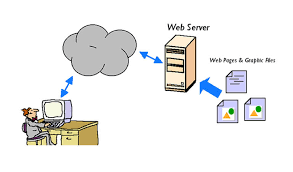
Hello there, first-time webmaster! You’ve come up with a great website idea, but there’s a problem – you don’t know how to make that website appear online. Don’t panic! We’re here to get you from zero to online in no time at all. Even if you don’t think you can set up your first webserver, we guarantee you can. All it takes is a little understanding and the right tools to get you started. Make yourself a coffee (or whatever beverage takes your fancy) and follow along.
The Digital Dilemma: Getting Your Website Online
You’ve created the world’s finest new website. Investing weeks, maybe months, and polished every pixel, brushed every line of code. What’s next? You have to give people somewhere to visit. You need a web server.
I can sense your standard email responding to this screenplay already: ‘But, but hey, I’m not a techie! Setting up a web server sounds positively overwhelming!’ Here’s the best news I’ve given you today: setting up a web server really isn’t so hard, so long as you acknowledge one single fact: can-do attitude is way better than know-how.
“But I Don’t Have Any Technical Skills!”
I hear you. You might have been imagining that to get set up with a web server, you’d have to tiptoe in through the back door, bursting in on some programmer who knows what they’re doing, as we saw above. But actually, you won’t need to be a junior Mark Zuckerberg or even a networking guru. While setting up an advanced web server is not a casual weekend task, putting together something functional enough for your first homework website is far easier than you might think. Soon we will see that the web is a playful place, full of murals, park benches and hidden ponds, and putting your bits on it is just the natty cap on the scarecrow of your creative ambitions. You can do it.
Let’s Get Started
Well, stop reading and chatting – here is how you finally build your first web server.
Pick A Hosting Provider: Your needs will determine your website hosting options. You will either have to opt for third party hosting, where your website is hosted with some other service, or you can explore self-hosting options. The type of hosting provider you choose also depends on your budget and desired functionality.
- Claim Your Name: Next up, you need to claim your name by registering a domain for your site – this is the URL that people will use to get to your site (e.g., www.yourwebsite.com). Again, there are a plethora of different domain registrars out there, so find one and get a catchy, memorable and relevant name for your site.
- Set Up Your Server With a hosting provider and a domain name chosen, the next step is to set up your server. Most hosting solutions offer a control panel that enables you to do everything from change your server settings and install software to manage your site files.
- Install Your Website Software: Next install a Content Management System, like WordPress, with a simple one-click install.
- Send Up Your Website Files: Time to party! Upload your website files to your webserver. Based on how you built your website, you might need to use an FTP (File Transfer Protocol) app to upload it manually, or your provider might have a built-in file manager.
- Test, Test, Test: . Finally, test your website on multiple devices and browsers.
- Go Live: You’re live! Finally. Finish all your testing, settle your nerves, get your website … just the way you want it, then… CLICK! Make your site live for everyone to see. Edit your domain’s DNS settings and point them to the new webserver. That’s it, you’re on the internet.
Conclusion: You Did It!
And that is how you install your first web server – easy peasy, right? A few hiccups through the process, but you’re still standing, and your shiny new-minted website is up and running. You did it. Sit down, take it easy, and ride on the wave of the glory of your brand new website. The world is your oyster, right? Live it up and rule!

